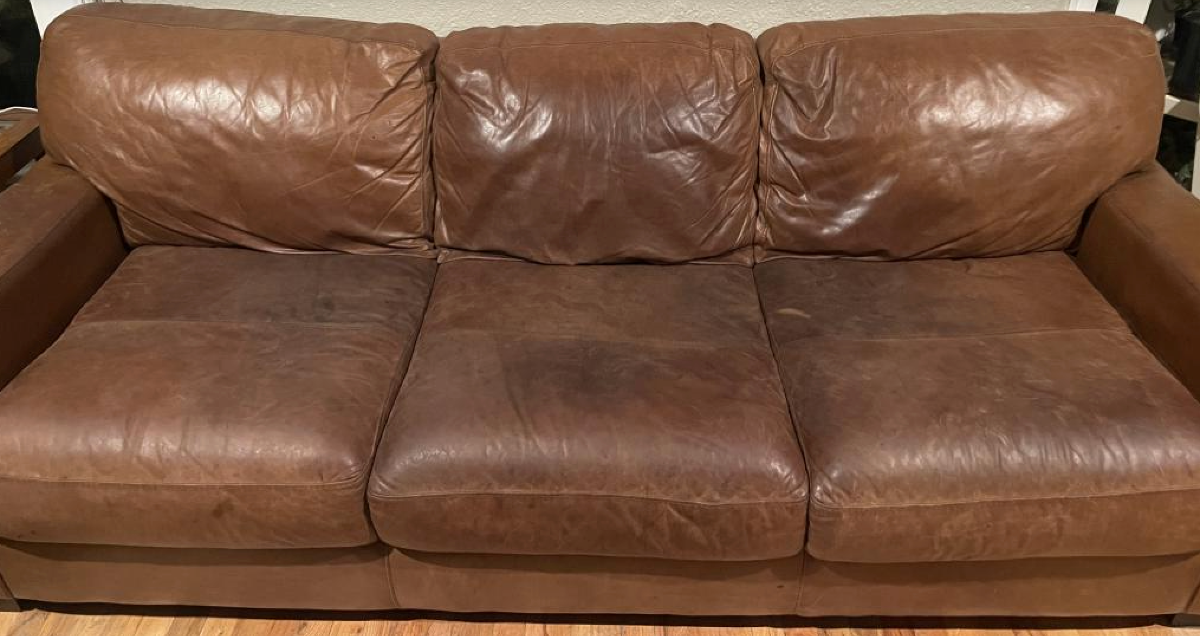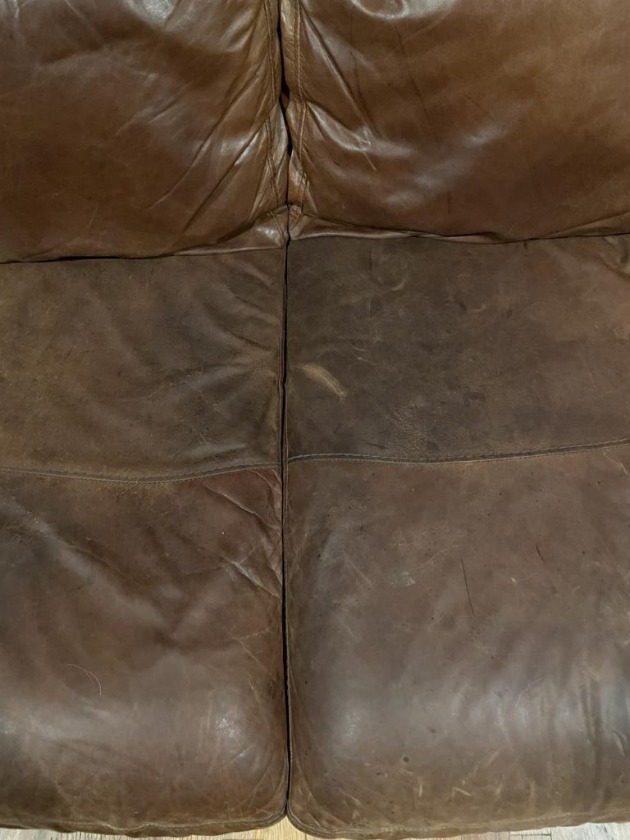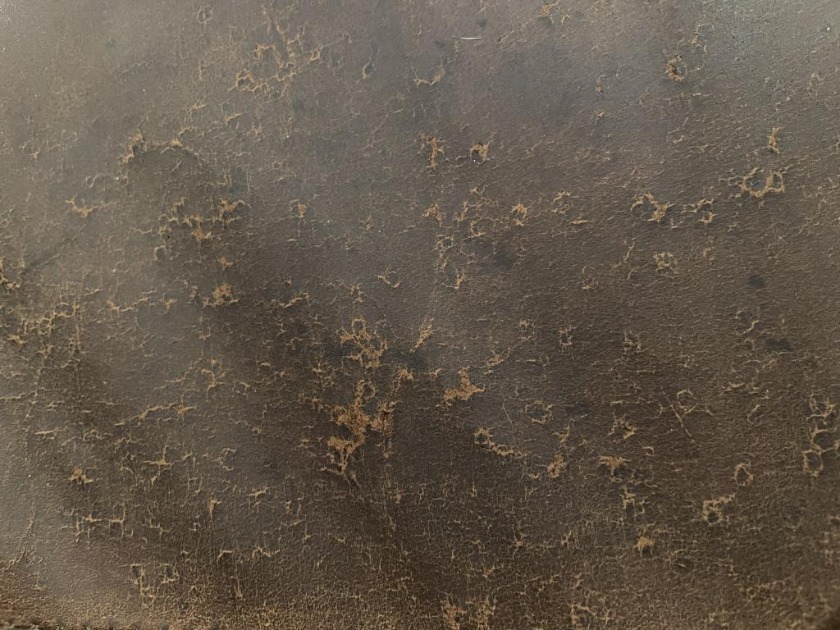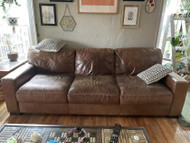Why Worn Aniline Leather Becomes Suede-Like, pH-Sensitive, and Weak — and How to Restore It
Posted by Roger Koh on 12th Oct 2025
When aniline leather’s original topcoat wears off, the surface loses its gloss and smooth grain, exposing the absorbent protein fiber structure beneath. This unprotected surface begins to behave like suede or nubuck — more absorbent, pH-sensitive, and vulnerable to alkaline damage.

Tannery Science Behind pH Sensitivity
During tanning, leather is stabilized at an isoelectric point (IEP) between pH 3.0 and 5.0, where the protein fibers are slightly acidic and positively charged. This positive ionic charge keeps the fiber structure tight and resilient.
When the leather is cleaned or conditioned with alkaline products (pH above 7.0) not designed for such absorbent surfaces:
-
The positive ionic charge is neutralized, destabilizing the collagen structure.
-
Alkalinity leaches out essential fatliquors — the natural oils and fats that give leather its softness and tensile strength.
-
Once the fatliquors are depleted, the leather becomes dry, brittle, and prone to cracking (“dry rot”).
-
Visually, the leather shows darkened, uneven areas caused by alkaline swelling and distortion of the fiber alignment.
-
Structurally, when the tensile strength falls below 1800 psi, the leather can rip easily under tension, especially on seats and cushion panels.

Restoring the Tannery pH Balance
The first step in professional restoration is to bring the pH chemistry back to its natural acidic range.
Leather Doctor® recommends a low-pH system designed to remove body oil contamination and reestablish fiber stability:
-
Degreaser 2.2 (pH 2.2):
A low-pH degreasing agent that safely emulsifies and removes body oils, grease, and perspiration residue while preserving the integrity of the protein structure. It also removes the darkened “oil rings” common on headrests and armrests. -
Rinse 2.0 (pH 2.0):
An acidic rinse that neutralizes remaining alkalinity, recharges the leather protein fibers positively ionic, and restores pH balance to tannery standards — preparing the leather for hydration and fatliquoring. -
Hydrating and Fatliquoring:
Once the pH is stabilized, the leather is rehydrated to relax stiff fibers, followed by Fatliquor 5.0 or Leather Scent Fatliquor 5.0 Plus to replenish the natural oils and fats.
This restores the original suppleness, strength, and flexibility.

Structural Repair and Refinishing
If the worn surface has become fuzzy or suede-like, Leather Impregnator 26 can be applied from the reverse side to strengthen and consolidate the fiber structure. Leather Abrasion Repairer R4 smooths out surface wear. For more severe damage, reinforcement with a leather patch and glue is necessary before refinishing.
Finally, refinishing with Leather Doctor® Aniline Leather Gloss Topcoat Refinishing Kit A6.tc restores:
-
The original gloss surface appearance
-
Rub resistance against friction wear
-
A protective coating that resists re-soiling and dye transfer
Ongoing Protection
Maintain the refinished surface with Protector B to reduce frictional wear and keep the leather feeling buttery soft while making routine cleaning safer and more effective.
In Summary
When aniline leather loses its topcoat and turns suede-like, it signals a chemical imbalance — not just cosmetic wear.
By restoring the pH equilibrium, replenishing internal fatliquors, and refinishing the surface, you bring the leather back to tannery-grade condition, preserving both beauty and tensile strength.
Recommended Restoration System:
Aniline Leather Gloss Topcoat Refinishing Kit A6.tc

